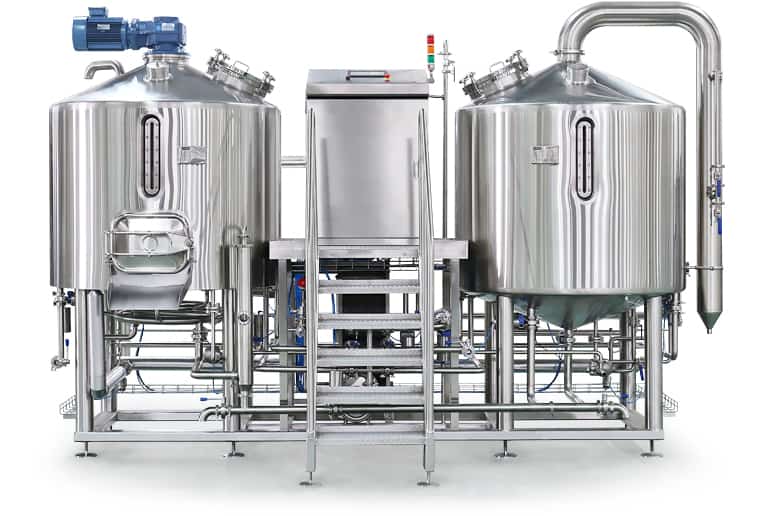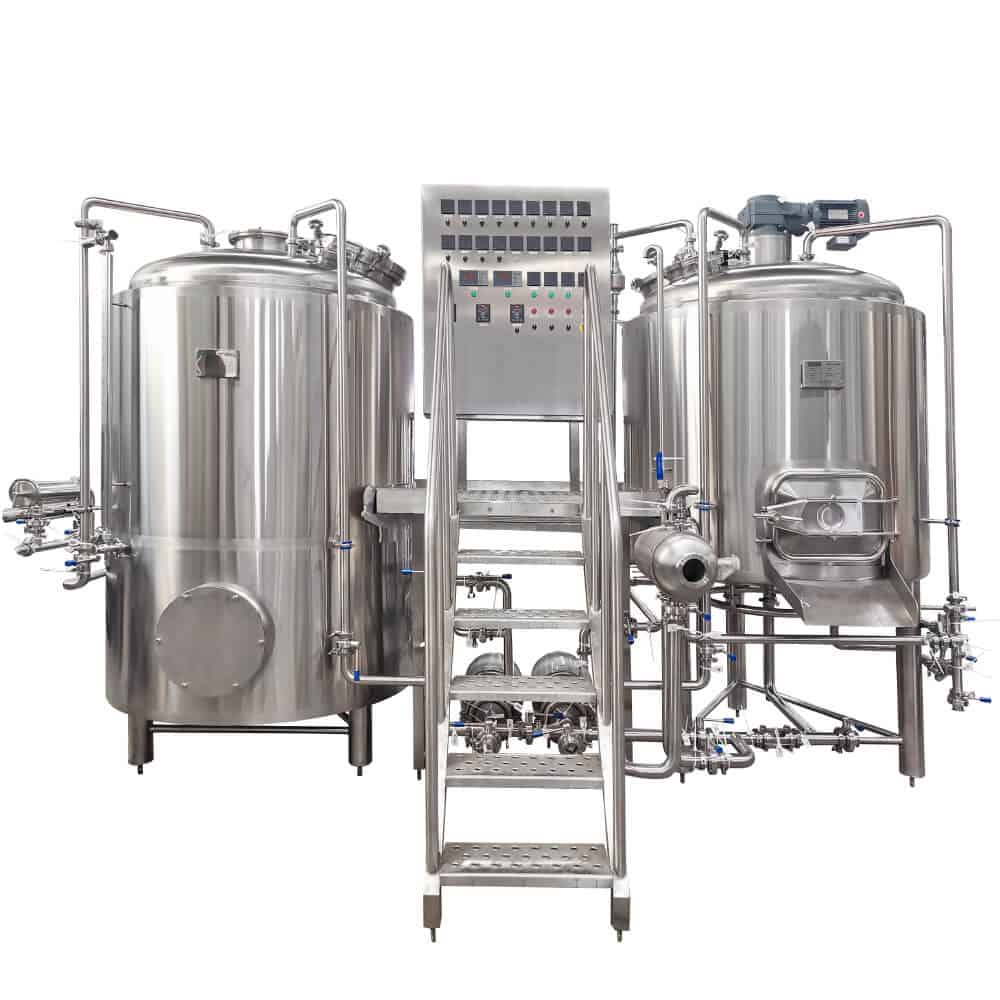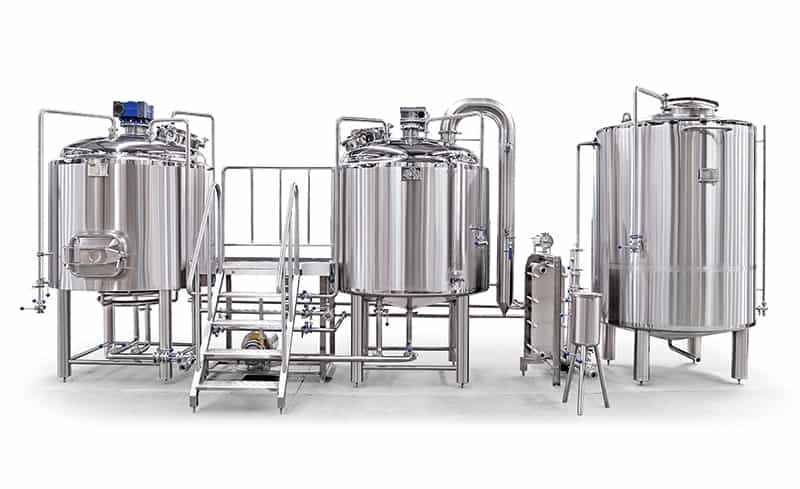Temperature control and heating are some of the most important parts of brewing, but it can sometimes be tricky to scale effectively with so many different choices. When you’re looking at brewhouse heating, there are three main options available to you. Each of them works in a different way to achieve the same result, consistent heating during the brewing process. However, each of these methods has pros and cons which make them better suited to different types of brewhouses. Depending on your size, budget, and goals, there will be a different brewhouse heating option that works best for you. These are the three main options for Brewhouse heating:
- Steam
- Direct Heat
- Electric
We’ve broken down which type is right for which situation below along with their pros and cons. Heating is an important element when you’re looking to start a brewery project, but the right solution will depend on the scale you’re looking at.
Brewhouse Heating Options
Steam
Steaming heating is the most popular method for brewhouse heating for larger breweries, typically using a steam jacket. This is an encasing in which steam continuously passes through, heating the wort up that is inside of the vessel. You can control the amount of steam similar to a flame on a gas stove, reducing and increasing it to hit your desired temperatures.
Where money is no object, steam is largely the best option brewhouse heating option available. The main benefit here is that it offers even heat distribution and great control. Compared with reducing the flame or an electric steam, controlling the flow of steam gives much better results. Caramelization is rare, and the overall boil time is going to be reduced by quite a bit.
Steam works great to distribute heat evenly. This means you’re getting a fast heat that’s effective and easy to control. There’s also the benefit of using steam for other bits of brewing equipment once you’ve got access to it. However, there are a few downsides to steam as a brewhouse heating option too. The first is safety, it will take some extra safety measures for staff to be aware of and there are some concerns about NOx boilers that you’ll have to follow. There are also more restraints on building regulations when using steam.
Steam works great for larger brewers, but those downsides will be a bigger problem for smaller brewers. The cost can also be a problem, even if the long-term benefits work still.
Pros
- Quick Heating Method
- Shorter Boil Times
- Helps Movement of Wort in Kettle
- Caramelization is Rare
- Steam can be Used for Other Tasks
- Even-Heat Distribution
Cons
- Cost
- Building Regulations Limit Where you can Install Steam
- Not Cost-Effective for Smaller Breweries

Direct Heat
Direct heat is a brewing method that uses an open flame under the kettle to apply heat. This is a pretty traditional way of heating a brew, but it has become refined and sophisticated with modern equipment. Usually, a direct fire or heat source is applied to the base of the kettle. Although, some alternatives also make use of a jacket. A gas burner is used to heat a diffuser or other element which then applies the heat. This method applies heat directly, but it does so using gas rather than electricity.
This method works great for more medium-sized brewhouses, especially those who probably don’t have the space or budget to invest in steam. There are a few advantages. The first is that you’re getting direct and simple control over the heat. It is relatively simple to operate and won’t be as complex for installation or storage as steam. It is also quite a bit more cost-effective, although your overall bills will likely be larger due to the gas used.
Another main benefit of direct heat is efficiency and safety. You’re not going to need much training to use it and safety concerns aren’t as major. However, it is less efficient than directly using steam and will take longer. Direct heat has a few other drawbacks for a brewhouse heating method, like heat dissipation and a higher chance of caramelization. This is controllable though. As a heat source, direct heat works great for more medium-sized breweries.
Pros
- Saves space
- Low Initial Cost
- Easy to Use
Cons
- Building Restrictions Could Limit Installation
- Heat Dissipation is Higher
- Higher Cance of Caramelization than direct fire

Electric
Electric as a brewhouse heating method is probably the simplest in terms of function. The heat is applied internally rather than externally, from electric elements. These are similar to electric heaters in other pieces of equipment.
Out of the brewhouse heating methods that are available to you, electricity is probably the worst. It has quite a few major drawbacks but there are some situations where electricity is going to work well. Largely, it is simple to install and very cost-effective. There aren’t the same concerns for up-front costs, or in buildings regulations limiting installation. If you’re a smaller-sized brewery, such as brewpubs, then electric can be made to work. It is relatively cheap to install and use. Plus, you don’t have to worry about the safety concerns for using stream or an open flame that come with other brewing methods
That’s the upside. There are quite a few downsides to using electric as a heating method. It is a slower method since the ramp-up for heat can take quite a while, it can tricky to clean, and it can be harder to control. There’s also an increased risk of scorching and caramelizing. It’s also worth keeping long-term cost in mind. Electric heaters are much more expensive to run than the other options. So, in the long run, electric will likely prove more expensive. While these are clear downsides, it is still a great solution for brewhouses on a smaller scale.
Pros
- Upfront Cost is Lower
- Easier to Work Within Building Regulations
- Suits Smaller Brewhouses Great
- Energy Efficient
Cons
- Harder to Control
- Higher Running Costs
- Not Suitable for Larger Breweries due to Power Drain
- Differences Between Heating Options

Which Brewhouse Heating Method is Best?
Those are the three main heating methods for a brewhouse, and one is a vital part of what you need to start a brewery. Each of those pros and cons should help you figure out which is right for you. However, if you’re still a little unsure then these are some general recommendations for what works best for each of these methods:
Steam – Steam works great for most people who need control and scale. The only real downside here is the cost and the safety training involved. So, if these factors aren’t going to be a problem for you, then steam is the best choice.
Direct Heat – Direct Heat has some positives even if there are a few drawbacks. In all, this method is going to work for most people on a medium scale or with a lower budget.
Electric – This method is mainly only recommended for smaller brewhouses where the others aren’t an option due to space or cost. However, with some care, it can still work. There are just a lot more downsides involved.
Out of those three brewhouse heating methods, there should be one that covers every type of brewer. The needs of a large scale and capacity brewhouse will obviously be different from some on a smaller scale, but heating options can scale alongside you.
